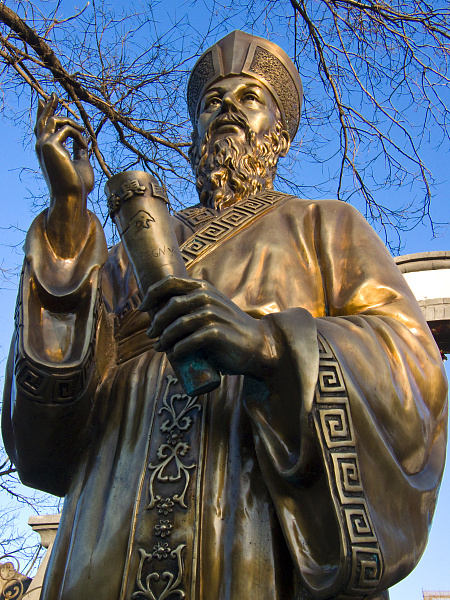An unexpected host for Westerners
By Wang Qian | China Daily | Updated: 2020-09-24 09:44

Numerous foreigners followed in Ricci's footsteps after he died in Beijing in 1610 at age 57. Some rose to high office in the imperial court.
German Johann Adam Schall von Bell (Chinese name Tang Ruowang) and Belgian Ferdinand Verbiest (Chinese name Nan Huairen) stood out for enhancing cultural and scientific communication between the East and the West.
Von Bell was a mathematician and astronomer who became a bureaucrat in Qing Emperor Shunzhi's (1638-61) court. He worked to revise the Chinese calendar to more accurately predict eclipses.
Verbiest became a household name after serving as Emperor Kangxi's (1654-1722) science teacher.
"However, their knowledge and science didn't make the officials understand what a dramatic change the world had been through," Zhu says.
"It's a pity that we missed this good opportunity to learn from the West."
The fact that the Asian civilization was at a height diminished motivation to absorb knowledge from the rest of the world, he explains.
Historian Yan Chongnian tells the Guangzhou newspaper Southern Weekly that the emperor didn't realize that China should learn Western science, which became a severe disadvantage.
While wielding limited influence in scientific development, some of these priests in the imperial court brought Western techniques to traditional Chinese painting.
Italian Jesuit Giuseppe Castiglione (Chinese name Lang Shining) and French missionary Jean-Denis Attiret (Chinese name Wang Zhicheng) were the most important among them from the Kangxi to Qianlong periods.
In the preface of Castiglione's Shixue (The Science of Vision), official Nian Xiyao wrote: "China has cultivated a great tradition of depicting nature in landscape paintings but neglected the accurate representation of projection and the measurement of buildings and implements. If one desires to depict these objects correctly, one must use the Western technique."
Castiglione designed many murals in the Forbidden City using painting techniques that were popular in European cathedrals and theaters.
























